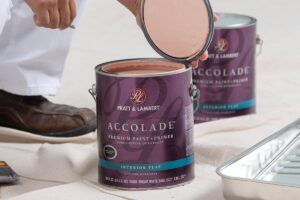The Amish community, known for their simple and traditional way of life, has long been a subject of fascination for those outside their close-knit society. One of the aspects that frequently piques curiosity is their approach to personal hygiene, particularly bathing. It’s a topic that has generated many questions and even misconceptions. In this comprehensive guide, we’ll delve into the Amish bathing traditions, their reasons, and the reality behind this unique aspect of their lifestyle.
The Amish Lifestyle: A Glimpse
Before we delve into their bathing habits, it’s crucial to understand the broader context of the Amish way of life. The Amish are a religious group that traces its origins to the Anabaptist movement in Europe in the 16th century. Today, they predominantly live in the United States, with communities in states such as Pennsylvania, Ohio, Indiana, and others.
The Amish are known for their commitment to simple living, strong community bonds, and adherence to a set of traditional values. They eschew modern conveniences, such as electricity and automobiles, in favor of a more self-sufficient and agrarian lifestyle.

The Misconception: “Amish Don’t Bathe”
One of the most common misconceptions about the Amish is that they rarely bathe or that they entirely forgo personal hygiene. While this belief persists, it’s largely inaccurate. The Amish do bathe, but their approach to bathing is different from the daily showers or baths that many people in modern society are accustomed to.
The Reality: Weekly Bathing
The Amish community typically practices weekly bathing. While the specific day of the week may vary from one community to another, it’s common for Amish individuals to take their baths on Saturdays in preparation for Sunday church services. Some may choose a different day of the week to align with their family or community traditions.
This weekly routine often includes a full-body wash, sometimes in a washbasin, while standing on a towel or cloth to catch excess water. They may use simple soap, water, and a washcloth to cleanse their bodies. The focus is on personal cleanliness rather than indulgence in long, hot showers or luxurious baths.
Reasons Behind the Weekly Bathing Tradition
The Amish community’s approach to weekly bathing is rooted in their religious beliefs, practicality, and environmental stewardship:
1. Religious Observance:
For the Amish, Sunday is a day of rest and worship. They believe in taking time to prepare for this special day, which includes personal cleansing and dressing in their best attire. Bathing on Saturdays is a way to prepare for the religious observance of Sunday.
2. Community and Tradition:
The Amish value their community and adhere to shared traditions. Bathing on the same day of the week, usually Saturday, aligns with their collective way of life.
3. Practicality:
The Amish lifestyle is rooted in simplicity and self-sufficiency. Weekly bathing is seen as sufficient for maintaining personal hygiene, and it conserves resources like water and energy.
4. Environmental Stewardship:
The Amish prioritize sustainability and the responsible use of natural resources. Weekly bathing reflects their commitment to conserving water and minimizing their ecological footprint.
The Bathing Process
When the time for their weekly bath arrives, Amish individuals typically follow a simple and practical process:
Preparation:
They gather basic bathing supplies, including water, a washbasin, soap, a washcloth, and a towel. A bucket or container is used to transport water if there’s no indoor plumbing.
Washing:
The individual undresses and stands on a towel or cloth placed on the floor. They use the washcloth to cleanse their body, starting from the head and working down to the feet.
Rinsing:
After washing, they rinse off with water from the basin or a separate container, often using a dipper.
Drying:
Once they’ve completed their bath, they thoroughly dry themselves with the towel, ensuring they are clean and ready for their Sunday church services.
Conclusion: Understanding Amish Bathing Traditions
The Amish approach to bathing, characterized by weekly and practical bathing routines, may seem unusual to those from more modern and urban environments. However, it is deeply rooted in their religious beliefs, commitment to community traditions, and environmental stewardship. While the Amish prioritize personal cleanliness, their bathing habits align with their broader way of life, which values simplicity, self-sufficiency, and reverence for tradition.
Understanding the Amish bathing traditions can help dispel misconceptions and foster respect for the unique and intentional choices they make in their pursuit of a simpler, community-centered, and environmentally conscious way of life.
Myths and Misconceptions
The Amish bathing traditions have often been the subject of myths and misconceptions, leading to misunderstandings about their way of life. Let’s address some of the common myths and provide clarity on the reality:
1. Myth: Amish People Never Bathe
- Reality: This is not true. The Amish do bathe, but they follow a weekly bathing routine, typically on Saturdays, as part of their religious and community practices.
2. Myth: Amish People Don’t Use Soap
- Reality: Amish individuals do use soap during their baths, although they prioritize simplicity and avoid indulgent or scented bathing products.
3. Myth: Amish Bathrooms Are Primitive
- Reality: While Amish homes are typically free of modern conveniences like electricity, their bathrooms often have basic plumbing and facilities, such as toilets and sinks. The simplicity is a conscious choice, not a lack of capability.
4. Myth: Weekly Bathing Is Unsanitary
- Reality: Weekly bathing can be perfectly sanitary when done correctly. The focus is on personal cleanliness and maintaining hygiene. It aligns with their environmental values of conserving resources.
5. Myth: Amish People Are Unkempt
- Reality: The Amish take pride in their personal appearance and cleanliness. They are meticulous about their clothing and grooming, even if they don’t indulge in daily showers.
Variations in Practices
It’s essential to note that Amish bathing traditions can vary between different Amish communities. While many follow the weekly bathing practice, some may have different routines, such as bathing on different days or using different techniques.
Additionally, young children and infants may be bathed more frequently, as the focus on weekly bathing is often more relevant for adults within the community.
Respect for Traditions
Understanding the Amish approach to bathing is a reminder of the diversity of cultural and religious practices in the world. It’s a way of life deeply rooted in tradition, faith, and community bonds. While it may differ from mainstream practices, it’s important to respect these traditions and their commitment to simplicity and sustainability.
In conclusion, the Amish bathing traditions provide a unique perspective on personal hygiene that reflects their religious beliefs and values. By debunking common myths and gaining a deeper understanding of their practices, we can foster greater respect for the Amish way of life and their intentional choices.
Certainly, here are some frequently asked questions (FAQs) about Amish bathing traditions:
FAQS
1. How often do the Amish bathe?
The Amish typically follow a weekly bathing routine. Many Amish individuals take their baths on Saturdays in preparation for Sunday church services. However, variations in bathing practices can exist between different Amish communities.
2. Why do the Amish bathe weekly?
Weekly bathing among the Amish is influenced by their religious observance and tradition. Bathing on Saturdays is a way to prepare for Sunday, a day of rest and worship in their community.
3. Do the Amish use soap during their baths?
Yes, the Amish do use soap during their baths. They prioritize simplicity and practicality in their bathing routines, and soap is a part of their cleansing process.
4. Are Amish bathrooms primitive?
Amish bathrooms are typically simple and functional, lacking modern conveniences like electricity. However, they often have basic plumbing with toilets and sinks. The simplicity is a conscious choice that aligns with their way of life.
5. Is weekly bathing considered unsanitary?
Weekly bathing, when done correctly, is not unsanitary. The Amish prioritize personal cleanliness, and their weekly bathing routine helps maintain hygiene while conserving resources like water.
6. Do Amish children follow the same bathing routine as adults?
While adults in Amish communities generally follow a weekly bathing routine, young children and infants may be bathed more frequently. The focus on weekly bathing is often more relevant for adults within the community.
7. Do all Amish communities follow the same bathing practices?
No, bathing practices can vary between different Amish communities. While many follow a weekly bathing routine, some may have different bathing schedules or techniques. Variations in practices exist among different Amish groups.
8. How do the Amish maintain personal cleanliness between weekly baths?
Between weekly baths, the Amish maintain personal cleanliness by washing their hands, face, and other areas as needed. They also change into fresh clothing regularly and prioritize overall hygiene.
9. What is the significance of the Amish approach to bathing?
The Amish approach to bathing is deeply rooted in their religious beliefs, practicality, and environmental stewardship. It reflects their commitment to simplicity and community traditions, while also conserving resources and reducing their ecological footprint.
10. How can outsiders respect Amish bathing traditions?
To respect Amish bathing traditions, it’s important to gain an understanding of their way of life and their intentional choices. This includes not perpetuating myths or stereotypes about their personal hygiene practices and showing appreciation for their cultural and religious values.



